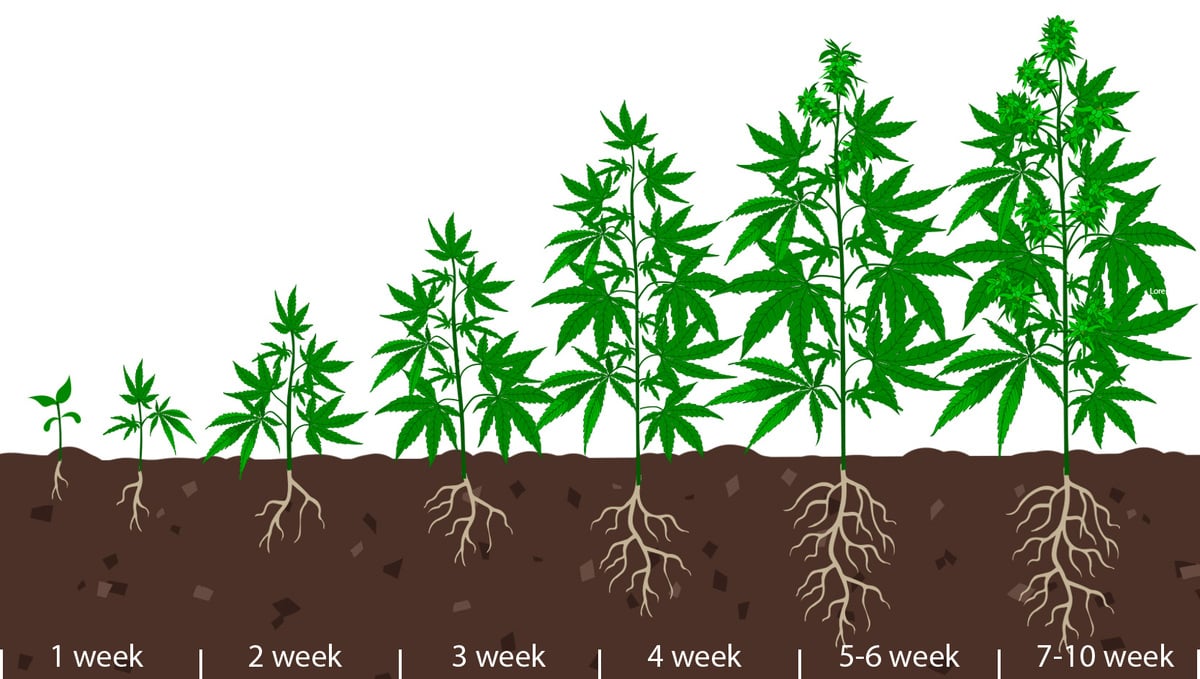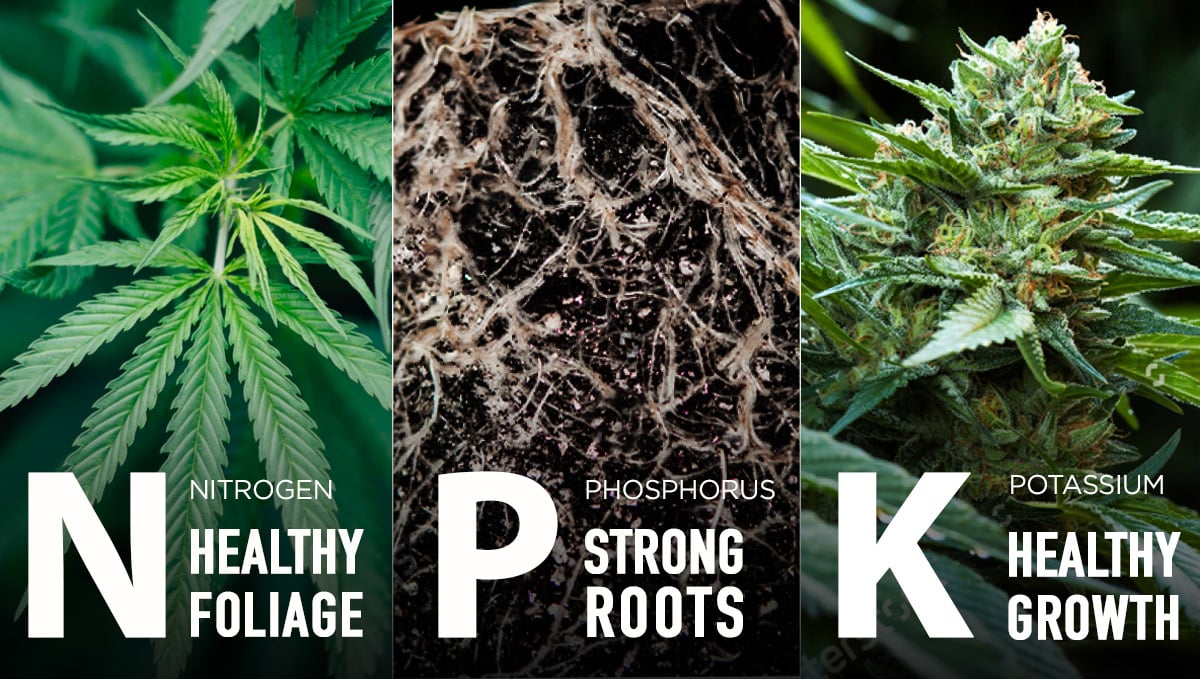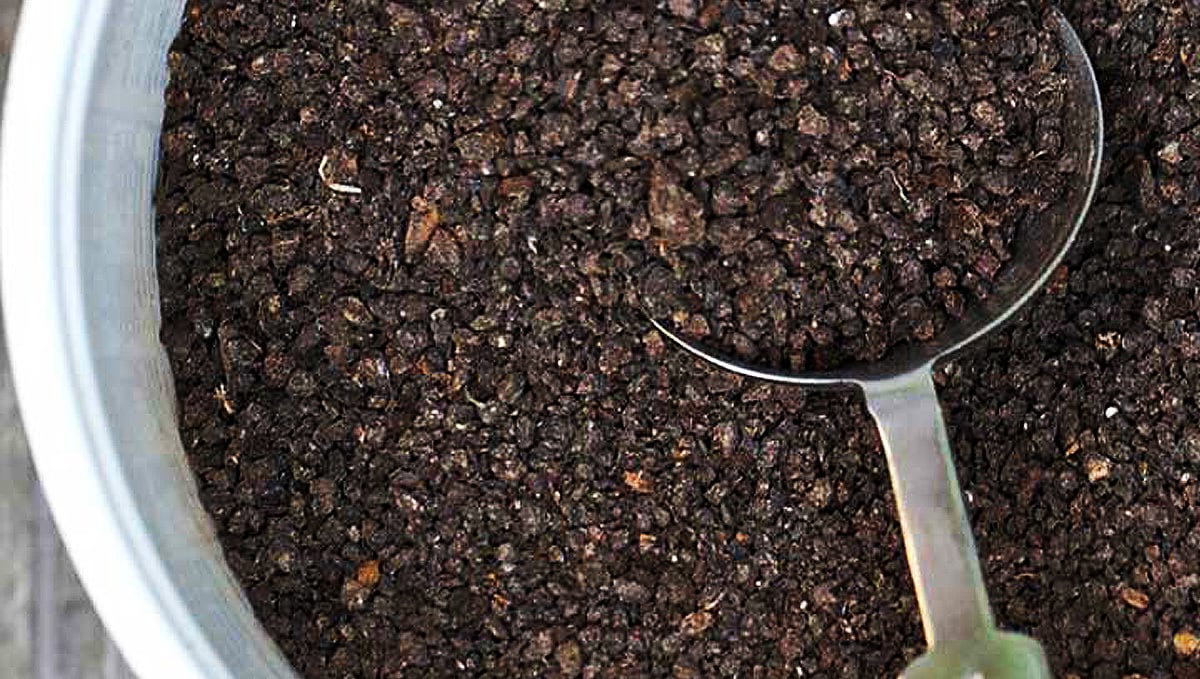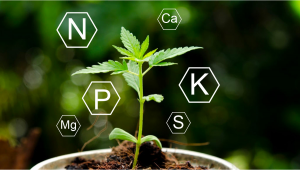Growing Autoflowering Cannabis Plants Using Organic Fertilizers

- 1. From seed to harvest
- 2. What nutrients do autos need?
- 2. a. Primary nutrients
- 2. b. Secondary nutrients
- 2. c. Trace elements
- 3. Organic nutrients for cannabis plants
- 4. Organic boosters for flowering
- 4. a. Phosphorus
- 4. b. Potassium
- 4. c. Molasses based nutrients
- 5. Bat guano
- 6. Making and using compost teas
- 6. a. How to make a simple compost tea
- 7. What about flushing with organics?
- 8. In conclusion
There is nothing more rewarding than growing your very own organic medicine, in the comfort of your own home. If you are planting indoor or outdoors, using organic nutrients is a green and eco-friendly way to grow your own medicine. In this article, we explain all about growing autoflowering Cannabis using organic methods, boosters for the growing and flowering stages, and the importance of flushing.
1. From Seed To Harvest
Autoflowers have the ability to be planted and harvested between 9-10 weeks. Regardless of the amount of lighting the plants receive, they will begin to start flowering after a 21-day period.

From this point onwards, the plants will focus on transitioning into flower, meaning they will stretch in height and start to produce resin-coated buds.
2. What Nutrients Do Autos Need?
Primary Nutrients
These are known as the macronutrients and consist of the three main nutrients an autoflowering Cannabis plant (or any other plant for that matter) will use during its lifecycle. Nitrogen, Phosphorus, and Potassium are essential in the development of root growth, stem, leaf, and flower production. These are responsible for the production of hormones, proteins, vitamins, and chlorophyll production.

Nitrogen
Nitrogen is the first macronutrient that a plant needs and is the main nutrient responsible for the vegetative growth stage of a cannabis plant’s lifecycle. It also plays a vital role in chlorophyll production, and without it, photosynthesis is negatively impacted. Nitrogen also makes up the building blocks of amino acids, which in turn are the building blocks for protein. Just like us humans, plants with low levels of protein development and availability will be frail and weak. It also has a role in ATP (Adenosine Triphosphate) development, which is directly responsible for the control of energy distribution throughout the plant.
Phosphorus
Phosphorus is the most vital macronutrient for proper and full flower development. It plays the role of mediator and makes all the other macro and micronutrients bio-available to the plant system. Without phosphorus, a plant may not develop a strong and healthy root ball which leads to underdevelopment throughout the entire plant system. It also helps in fundamental biochemical operations such as synthesizing proteins and carbohydrates, strengthens the plant structure, increases resistance against diseases and pests, optimizes the water usage of the plant, and ensures the best bud development possible.
Potassium
Potassium has a range of important jobs and roles to fill. Along with nitrogen, potassium plays a huge role in ATP production, It helps in pest and disease resistance, and it plays a massive role in osmoregulation which is the passive regulation of water and salt concentrations. Potassium is directly involved in the control of the stomata, which are the pores in the leaves of a cannabis plant. These pores open and close, allowing for the plant to essentially sweat. This is how cannabis plants control their rates of CO2, H2O, and oxygen.
Secondary Nutrients
Magnesium, Sulphur, and Calcium are classed as secondary nutrients and will be used in combination with primary nutrients and trace elements. They are very important and play a huge role in the metabolism and cell function of Cannabis plants.
Trace Elements
These are essential to the balance of the plant health and should be used in conjunction with primary and secondary nutrients.
3. Organic Nutrients For Cannabis Plants
If you have chosen to buy the nutrients and soil from an existing brand, then you will have everything that you need between the soil, and bottled nutrients to cover the plant’s requirements. For beginner growers, following an organic feeding chart is an excellent way to grow Cannabis plants, without the need for any advanced skill level.
For those who wish to take organic growing to another level, using living soils, homemade compost and worm castings and aerated compost tea will allow Cannabis plants to grow with incredible vigor, plant health, and with a superb resistance, as well as enhancing the flavor and aroma of the flower even further.
4. Organic Boosters For Flowering
As the flowering period of an autoflowering cultivar can last from 6-7 weeks, it is important to supplement the plants with higher amounts of Phosphorus and Potassium than before. Nitrogen is not as essential and can be cut out during the final half of the blooming period.
Phosphorus
- Used for root development and flower production.
- Aids in energy transfer and photosynthesis.
- Necessary for resin production.
- Essential for seed production.

Potassium
- Responsible for combining starches and carbohydrates.
- Aids in chlorophyll production.
- Helps regulate the stomata function responsible for CO2.
- Increases oil content and flavor profile.
Molasses Based Nutrients
- These will be thick and dense with a dark brown, caramel shiny appearance.
- Packed full of minerals and rich in Potassium.
- A rich source of sugar for microbial soil life.
- Used normally to add weight to the plants during flowering.
5. Bat Guano
A very popular choice for growers who are aware of the benefits associated with using bat guano in powder form, as a pre-made extract, or in the form of an aerated tea. Nutrient companies will source their guano from all over the world ranging from Indonesia, Jamaica, Spain, and many other places. Depending on the diet and where the bats are located, and the time the dried guano is harvested the bat caves can determine the N-P-K value. Normally bat guano is high in Phosphorus and will act as an excellent nutrient to feed plants during the blooming period.

The Benefits Associated
- Flavor is dramatically enhanced.
- Bat guano is rich in enzymes and beneficial bacteria.
- Can be used in powder form and mixed into a growing medium.
- Aerated bat guano teas are superb for stimulating flower production.
- The aroma and terpene production will become more advanced.
6. Making and Using Compost Teas
Compost teas have become increasingly popular in the last decade in the home-growing and commercial organic cannabis sectors and for good reason. Compost teas are made by steeping compost in water – usually aerobically. They come in two main varieties - Fungal or Bacterial.
Fungal Compost Teas
Fungal compost teas are made by steeping compost in water with additional ingredients like molasses and kelp. This creates an environment for beneficial fungi to thrive, and their growth is encouraged by the addition of food sources like glucose and proteins. Fungal teas provide a rich source of bioavailable nutrients – specifically amino acids, nitrogen, phosphorus, and potassium.
Bacterial Compost Teas
Bacterial compost teas are created by steeping a mix of compost, humic acid, and beneficial bacteria in water. This process promotes the growth of beneficial microbes that can help plants to access nutrients while suppressing pathogenic organisms. Bacterial teas are high in nitrogen and phosphorus, which makes them ideal for fertilizing flowering plants and encouraging fruit production.
How to Make a Simple Compost Tea
Creating your very own compost tea at home is super easy. All you will need is:
- High-quality compost - this is the base of your tea, so don't skimp on cheap compost.
- An air pump - this will provide oxygenation to your compost tea as it brews.
- A large container for brewing the tea.
- A little bit of patience - we recommend brewing the compost tea for at least 18 hours but no more than 30. In fact, we always brew ours for 24 hours exactly. This is enough time for the micro-organisms to grow and populate the tea, without allowing for unwanted bacteria or fungi to also appear.
- The temperature is also important - a brewing temp near 25 degrees celsius is perfect, but you can get away with it being a little lower or higher. Keep in mind that lower brew temps will result in you needing a longer brewing period, and vice-versa.
Then all you have to do is add your compost and water to the container, aerate it with the air pump, and wait. Once your tea is finished, you can use it immediately or store it for later use. Store your compost tea in a light and air-sealed container for up to 5 days, but if you wish to store it for longer then you are going to want to add an air pump and bubbler to the container.
Many people find that their teas benefit from a small amount of sugar or molasses added before application - this helps keep beneficial bacteria and fungi alive when applied to plants. You can also add a little humic acid to the mix to help the overall process as well. In terms of dosage, a good rule of thumb is around 1 to 1.5 cups of compost per gallon of water. If you want to make your life a little easier down the line (especially if you will be using the tea as a foliar spray) then you may want to place the compost in a pair of clean pantyhose, or a thin pillowcase. This eliminates the need to strain the tea once brewed.
7. What About Flushing With Organics?
If you have been using any type of nutrients apart from watering soil, then you will need to flush your autoflowering plants. One of the main reasons is to encourage your flowering ladies to push and use up all of their internal reserves, and the other is to flush out your growing medium.
Over the 10-week period, there will have been lots of nutrient solution in the form of undissolved salt minerals that need to be cleanly removed. Water is essentially a solvent and by using only pH-adjusted water, for the final 14 days prior to the harvest date then you will have cleaned out the growing medium, and encouraged a final growth spurt from your plants.
8. In Conclusion
Growing Cannabis using organic methods is a great way to learn about how autoflowering plants grow, the ideal watering frequency, and to obtain the best flavor possible. Follow simple instructions and in some cases simply add only water, Autoflowering cultivars are so resilient and can adapt well to any climate, so provide them with the ultimate organic nutrition and they will do the rest for you.













Comments